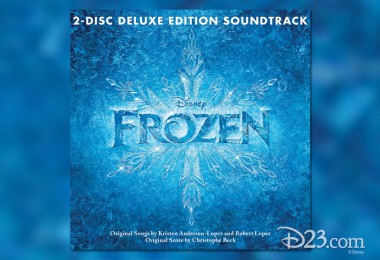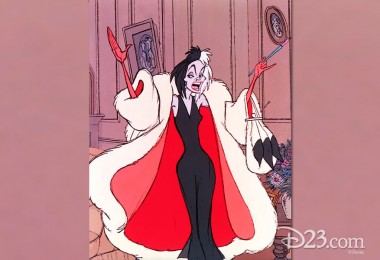Debra, Sacramento, California
A: A wave of patriotism swept the nation during World War II, and Walt Disney was one of many caught up in it. He vowed to do what he could to help the war effort, spearheading the production of training and propaganda films by his studio and the designing of military insignia for fighting units. By the 1940s, Donald Duck had become the most popular character at the Disney Studio, and since he had an explosive temperament, he seemed a natural for war-related cartoons.

Avi, Irvine, California
A: Yes, there were some songs cut. Demos of some of them are on the two-disc CD containing the Frozen soundtrack.
Jeremiah, Fairfax, Virginia
A: While written by Lacerda (1903-1958) and licensed by Disney, it was developed by Charles Wolcott and Lacerda was uncredited. The piece appears at the end of the Baia train sequence and just before the “Os Quindins de Ya-Ya” sequence. A pandeiro is a Brazilian version of a tambourine.
Annette, Fond du Lac, Wisconsin
A: This poem was created by the Disney story team for our 1954 cartoon, based on the well-known story by Ellis Parker Butler. It was indeed published in the Golden Press book, Walt Disney’s Story Land, first published in 1961 and kept in print into the 1990s.
Dawn, Stoughton, Massachusetts
A: Regarding the animated features, you are forgetting mothers in such films as Snow White and the Seven Dwarfs (stepmother), Dumbo, Cinderella (stepmother), Peter Pan, Lady and the Tramp, Sleeping Beauty, One Hundred and One Dalmatians, The Lion King, Hercules, Mulan, Toy Story, The Incredibles, and The Princess and the Frog. Even Rapunzel in Tangled had her Mother Gothel, not to mention her real mother.
Jim, Cape Canaveral, Florida
A: In doing more research, I see that the elephants have not always been referred to by the same names. Fidgity and Giddy were also called Catty and Giggles. According to John Grant in his Encyclopedia of Walt Disney’s Animated Characters, at the beginning of the film, Matriarch has the pink-violet headdress, Catty has the yellow, Giggles the blue, and Prissy the red. Matriarch is the leader of the group; when the stork asks if she is the one receiving the baby, she haughtily replies, “Certainly Not.” Prissy’s reply is “The very idea!” Later on, when the elephants first see Dumbo’s huge ears, Catty is the one who says in an undertone, “Just look at those E.A.R.S.,” with Giggles responding, “Those what? Oh, ears!”
Peter, Monrovia, California
A: The film was released on DVD in 2006, so there would be little interest in a 16mm film print. Besides, that is a copyrighted film that is technically the property of The Walt Disney Company, so sale of it is not legal.
Jenny, Chaska, Minnesota
A: I assume you are referring to films that had teenage actors in the lead role, and many Disney films fit that criteria. The two you cited are from the late 1970s and early 1980s. You might include such other titles from that era as Tex, Midnight Madness, Freaky Friday, Candleshoe, Return to Oz, The Journey of Natty Gann, Ride a Wild Pony, My Science Project, Flight of the Navigator, and the Witch Mountain films. Some of these are currently available on DVD.

Avi, Irvine, California
A: The original book, by Dodie Smith, features Cruella with the dual-colored hair. It gave her a distinctive look.
William, Anchorage, Alaska
A: You are thinking of Hans Christian Andersen’s story, The Snow Queen. It was not made into a movie by Disney, but there was a well-known Russian-made animated film in 1957 that was dubbed into English and had a wide release in the U.S. in 1959. Disney Legend Tommy Kirk provided one of the voices. There have been other filmed versions of the story, most of which have been released on DVD, including a 2002 television movie, starring Bridget Fonda.




